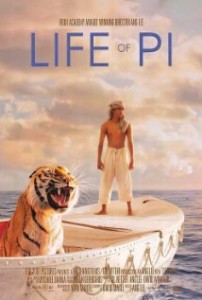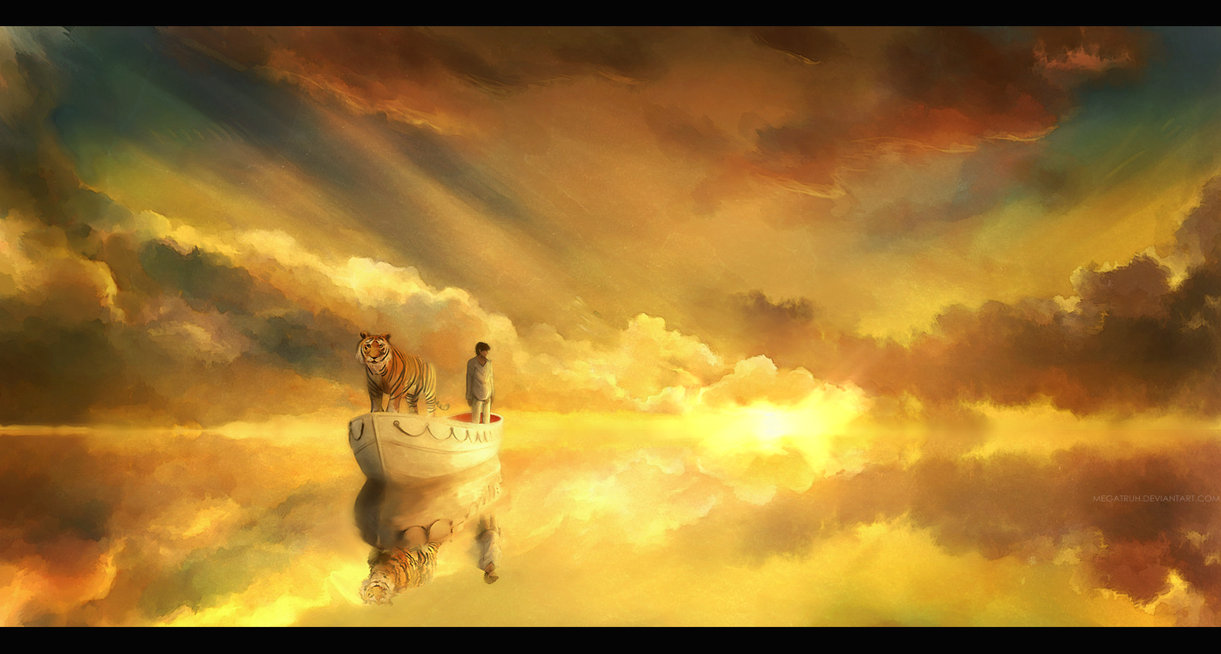 The novel “Life of Pi” by Yann Martel is one of those rare types of books that keeps you glued to the pages. The story itself is one of the most unique that I have read, and the writer’s use of imagery brought even the most simplistic moments to life. So, I was curious how they would be able to translate these images to the big screen, since it could never quite equal what I had pictured inside my own head. But Ang Lee’s “Life of Pi” is about as close as you can get. It is a near perfect adaptation of one of the greatest modern novels.
The novel “Life of Pi” by Yann Martel is one of those rare types of books that keeps you glued to the pages. The story itself is one of the most unique that I have read, and the writer’s use of imagery brought even the most simplistic moments to life. So, I was curious how they would be able to translate these images to the big screen, since it could never quite equal what I had pictured inside my own head. But Ang Lee’s “Life of Pi” is about as close as you can get. It is a near perfect adaptation of one of the greatest modern novels.
“Life of Pi,” like the novel “Robinson Crusoe,” or the film “Cast Away,” is, at its heart, a story of survival. A man is pitted at the edge of the world, and must learn to adapt to his new life, or else die in the process. But “Life of Pi” adds a special element to this story that seems to make it that much more interesting: a tiger. It also delves into philosophical questions of religion and God.
The story is told in flashbacks; from the survivor, Pi, to a writer who wishes to hear his story. Growing up in India, Pi spends much of his youth becoming infatuated with religion, and ends up joining three of them: Hinduism, Christianity, and Islam. He is criticized for following three conflicting sets of beliefs, but believes them to all be relevant in some form. Pi’s other interest is related to his family’s occupation, as zookeepers. He is fascinated by the animals, and at one point even tries to hand-feed a full-grown Bengal tiger named Richard Parker. The main story begins when Pi’s family attempts to move their zoo across the Pacific Ocean. In the process, they get caught in a storm, which sinks the ship. But Pi manages to escape.
So, Pi is shipwrecked, his family is gone, and he is now in the middle of the Pacific Ocean with only a zebra, a hyena, and a tiger to keep him company. He must learn to survive with limited supplies, and no immediate chance of rescue. It is at this point in the novel that we hear the most introspective thoughts of Pi; questioning his beliefs in religion, observing the ocean and the world around him, and attempting to train Richard Parker so that he is not a constant threat. Ang Lee takes many of these images and translates them wordlessly on screen. At points, all you can do is stare, wide-eyed, at the world in front of you: hordes of luminescent green and purple jellyfish hover just below the surface of the water, casting the world in an eerie glow; swarms of flying fish sweep through the ocean, and Richard Parker catches them in his gaping jaws; on an island, thousands of meerkats stand on hind legs and stare inquisitively as Pi walks by, curious about their new visitor. Richard Parker himself is at times so life-like, it is hard to believe he is entirely computer animated. Visually, “Life of Pi” is one the most impressive 3D films to date.
There are some scenes that were cut from the novel, such as one in particular where Pi passes by another lifeboat in the ocean and meets another survivor of the ship. But to anyone that has not read the book, the cutting of these scenes do not detract significantly from the movie. Yet at times, “Life of Pi” does seem a little rushed. Pi learns new skills on his boat only moments after attempting them, and the scenes often skip from one to the next in fast succession.
Overall, Ang Lee’s “Life of Pi” is a tremendous achievement. In the end, we are left questioning what is real and what is not, and in this sense it is more than just a fun adventure movie. And as I have said for previous films, do not skip out on the few extra dollars. This is a must in 3D.

12:59 pm on November 26th, 2012 1
Thanks. I was wondering if the movie would be good. I will put it on my must see list.